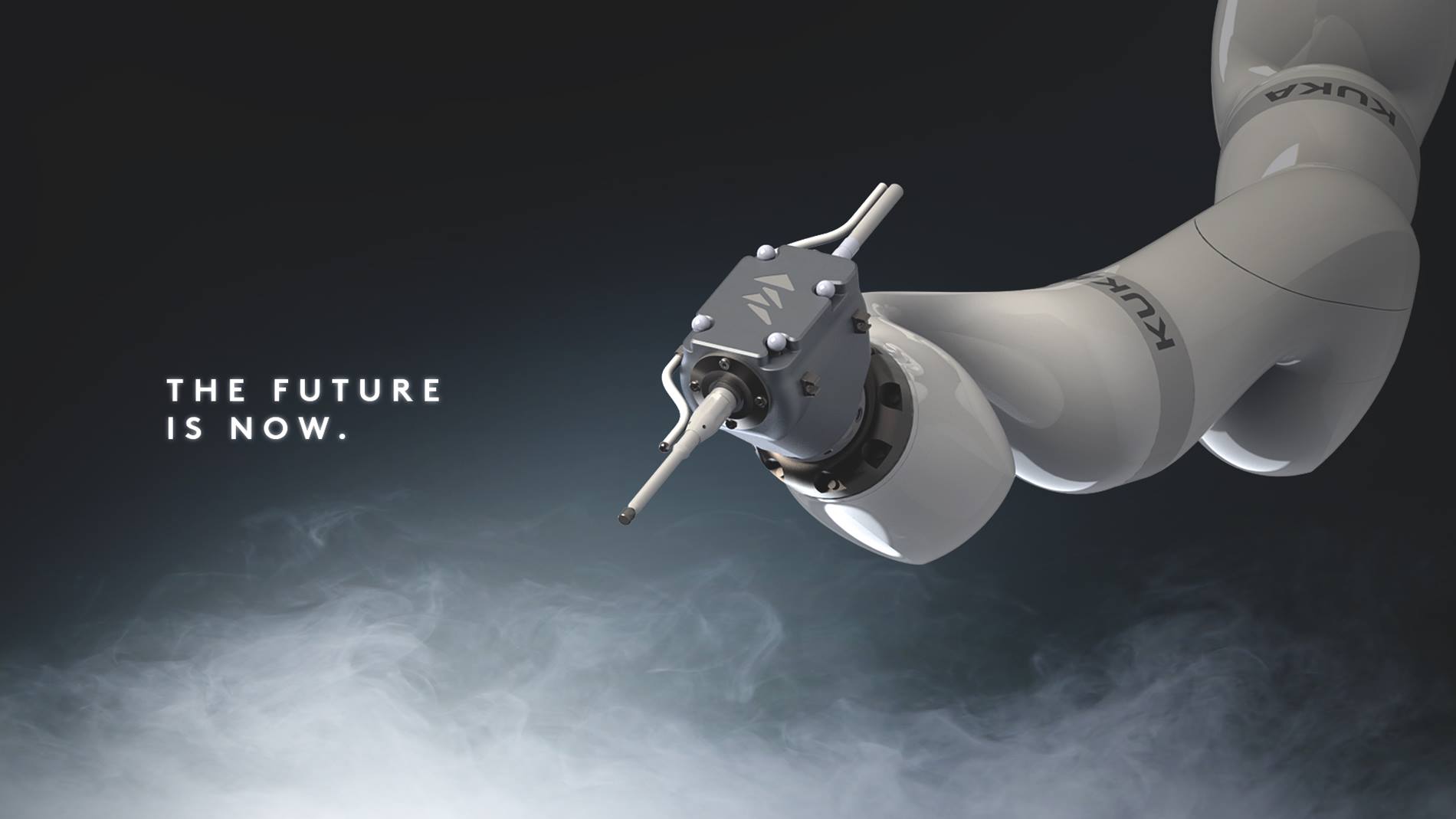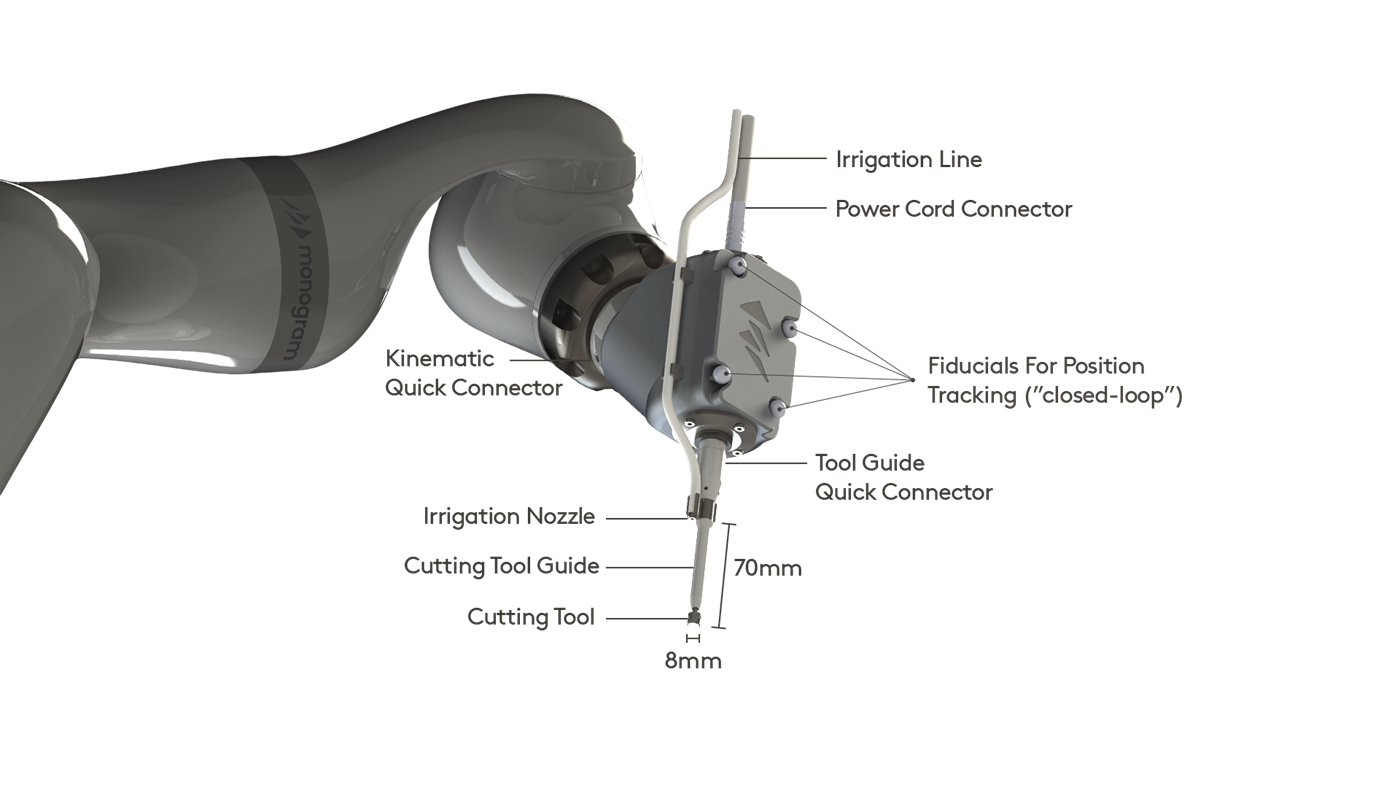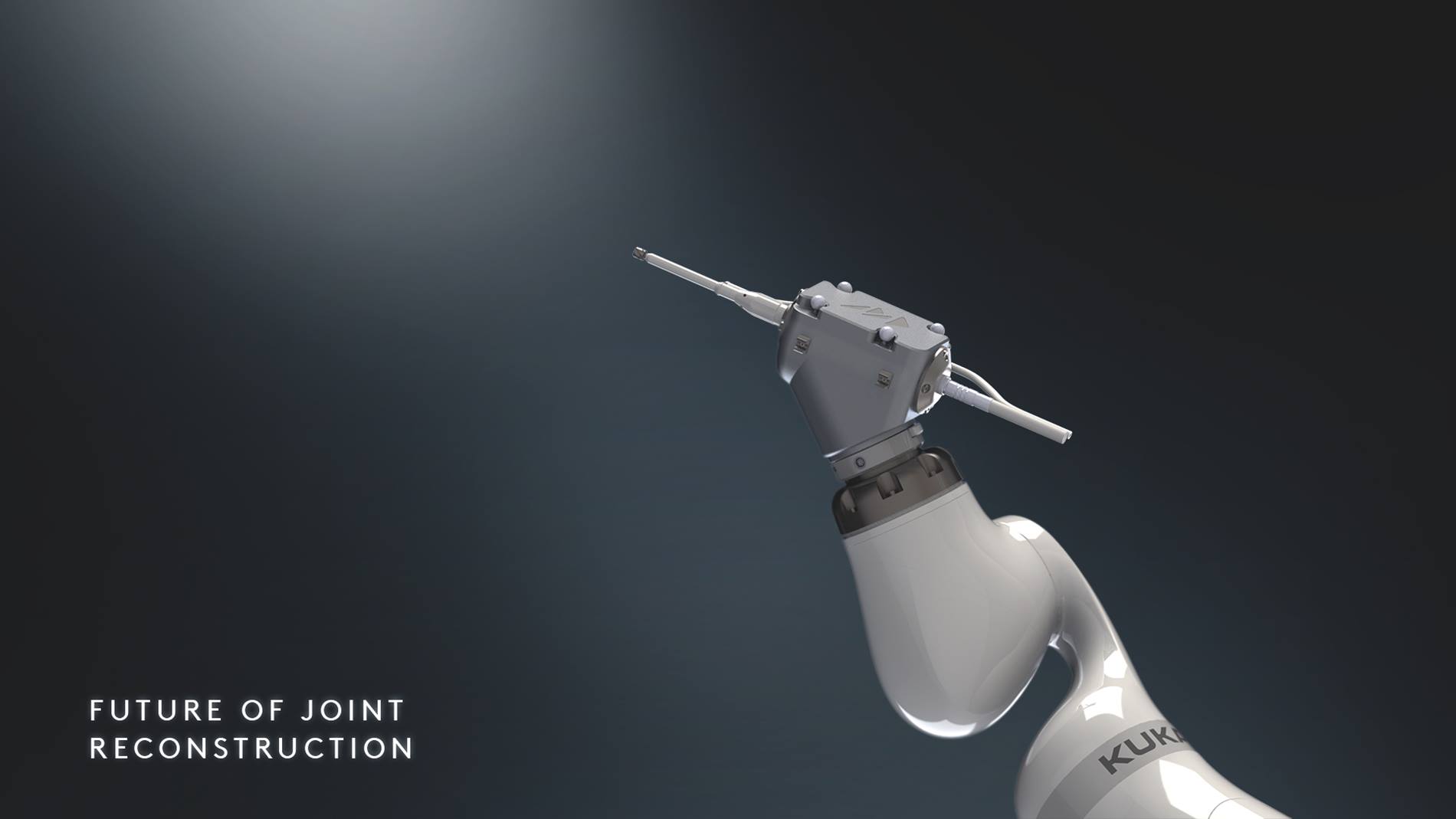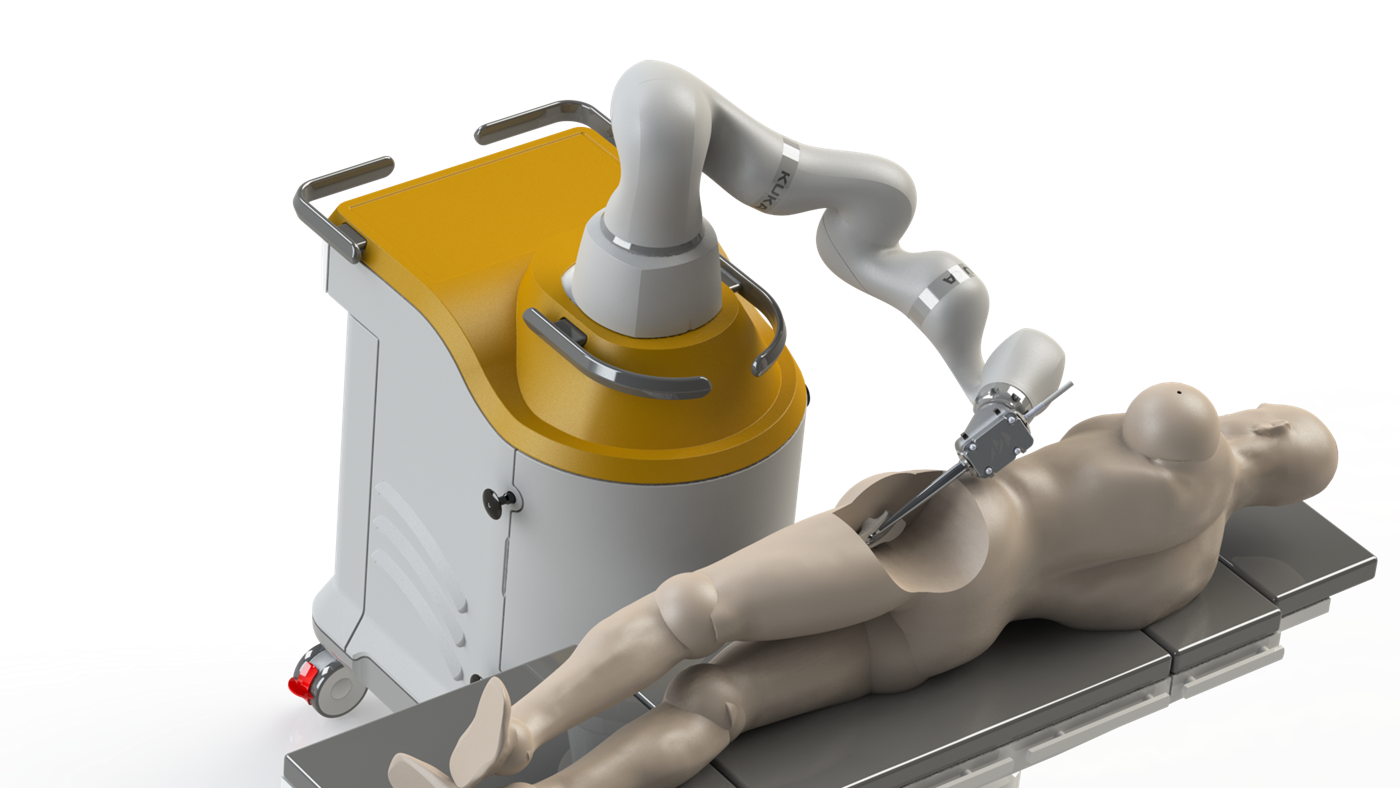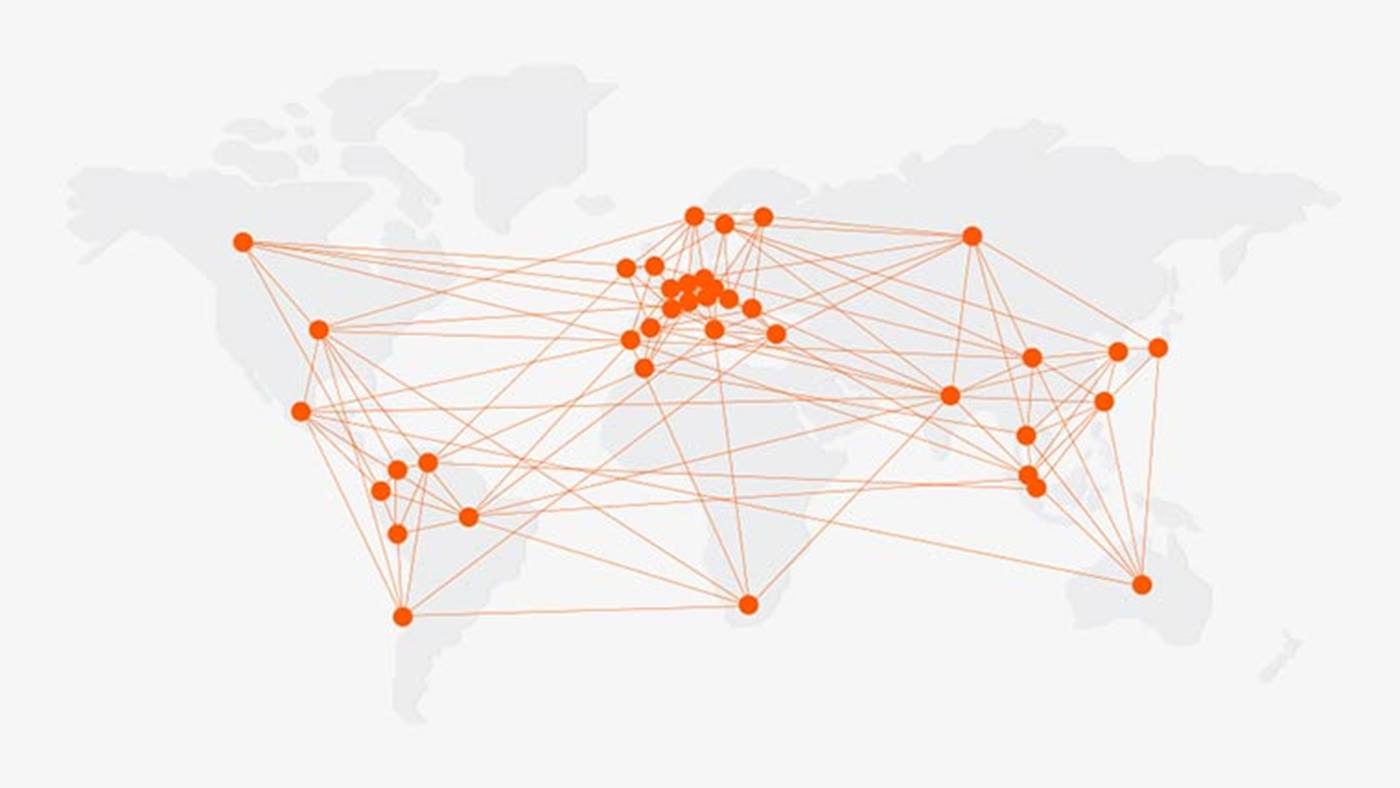Bringing joint replacement surgery into the 21st century with a better robotic system
The workflow of the Monogram robotic system is patient-centric from beginning to end. Starting with a CT-scan, the Texas-based company uses its proprietary software to autogenerate a customized implant that is 3D printed to match the patient's anatomy. The CT-scan is also used to develop a detailed preoperative plan that allows a KUKA LBR Med to mill the printed implant features precisely. The surgeon inserts the orthopedic implant into the personalized cavity made with precision using the same integrated lightweight robot. This combination eliminates a lot of the variability of outcomes that lead to readmission and dissatisfaction.

